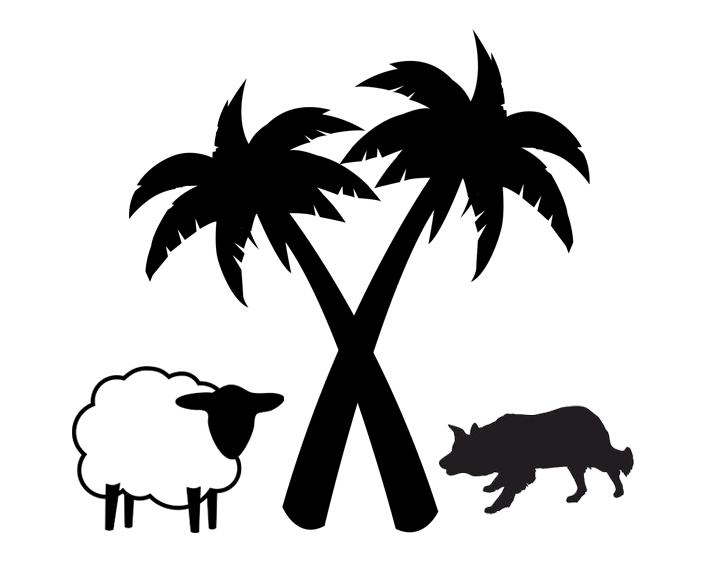Intention is a Key
I can train a dog to be successful in Open sheepdog trials, and I can handle a dog. I have to say, though, that doing so is not one of my greatest innate talents. I’m empathetic with animals, but convincing them that it’s a great idea to do my bidding? To influence or even overcome their instincts, impulses, worries, weaknesses in service of my wishes? That’s been a long and challenging road for me. There are trainers and handlers who are truly masterful at this arcane endeavor. Fortunately, many of them are available to share their knowledge and skills with the rest of us.
In my defense, however, I think that my own struggles can be instructional to others. Believe me, when I see bumbling, poor timing, lackluster stockmanship and general cluelessness, I can relate. I have been there, or at least to a very similar, often embarrassing place.
One of the biggest hurdles for a beginner, from my perspective, is the concept of developing a clear mental image of what we’re asking of our dogs, and understanding how to communicate this to them. This holds true in competition as well as training.
I remember, cringingly, when one of my patient instructors was explaining to me why Delia needed to “square up” her “slicing” “flanks,” and how I could work on accomplishing that. There I stood, nodding thoughtfully - and without any mental picture whatsoever of what she was trying to help me to see. Not a clue.
I was so full of B.S.! I never did fix those flanks, either.
How can we convey to our dogs what we want from them, specifically in trialing situations, if we don’t have any real concept of it ourselves?
I can’t teach a person how to create a clear mental picture of what they’re asking of their dog when they’re standing at the handler’s post at a sheepdog trial. That can only come with time, a lot of observation and attention. It’s worthwhile, though, to cultivate it. In fact, I think it’s key.
However you go about it, learn how to see the big picture. When we send our dog from our feet for the initial gather at a trial, what are we concentrating on? Are we internally freaking out because we really, really need our dog to lie down at the top and we don’t think it’s a likely outcome? Are we quaking in our mud boots with the fear that our dog will come in tight and maybe scatter and chase sheep, or get stuck on tough range ewes, or grip in the shed, and mentally scrambling about how we’re going to deal with these potential disasters? Can we deal with it? And so we’re marshalling all our mental forces to prepare for these situations? Is our nervousness coming out in our whistles, body language and energy? Probably.
This is not conducive to improving. It’s tunnel vision. It prevents us from handling every moment as it occurs, and from getting as close as we can to our goal: a beautiful and harmonious run. Poetic teamwork.
Yes, of course we need to handle our dogs with the awareness of their potential shortcomings and a plan of action in case those manifest, and certainly to concentrate on improving these aspects during training. But what are we really trying to accomplish as we’re standing at the post?
I propose that our mental image of the way our run is supposed to go is crucial. It needs to be internalized and projected. And we must run our dog with this focus if we are striving for success
Perhaps it sounds “woo-woo” and new agish, or whatever. Oh, well. I truly believe that nonverbal communication is at play in a big way between us handlers and our dogs on the trial field. If we’re tense, fearful and unconfident, don’t you think that our partners pick up on that? If we’re anticipating the worst, that we might very well be projecting and inviting it?
Our job as handlers, rooted as we are to one spot, is to guide, support and handle our dog through all the situations that will arise as they navigate the course. We are the ones responsible for seeing the big picture of the terrain, the behavior and type of stock, the likely pressures and trouble spots, before our dog encounters any of them. “You better lie down at the top, you maniac! ” may very well be a valid thought to have on your mind as you send your dog. “Don’t grip, don’t grip, don’t grip” might be coursing through your head as you meet your dog in the shedding ring. But should they be the primary thoughts? No, they shouldn’t. Shut them off!
Picture the graceful, scopy outrun; the clean and authoritative shed, that you know your dog has within him. How do you know? Because of all the training and work you’ve done together on those things, right? That’s why you’ve decided you’re ready to step up to the post in Open competition … isn’t it?
We need to encompass the vastness of what we are asking of our dog and tune in to how to communicate this to them. We want to be alongside of our dog as they run out, and right there, with them in each moment the best we can, throughout the run.
It’s not just a question of a series of commands, no matter how tightly our timing can become. It’s not a linear equation. It’s more like … global. Universal, even.
Woo-woo!
